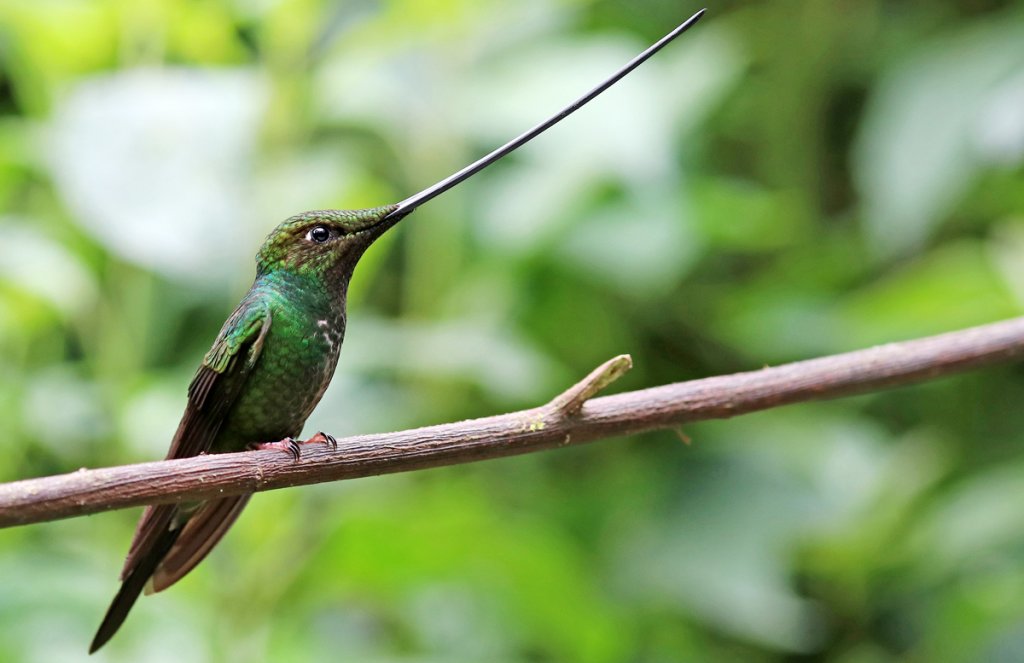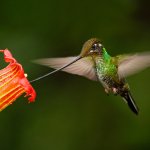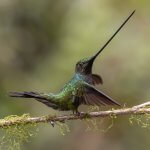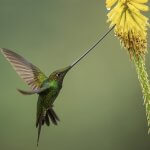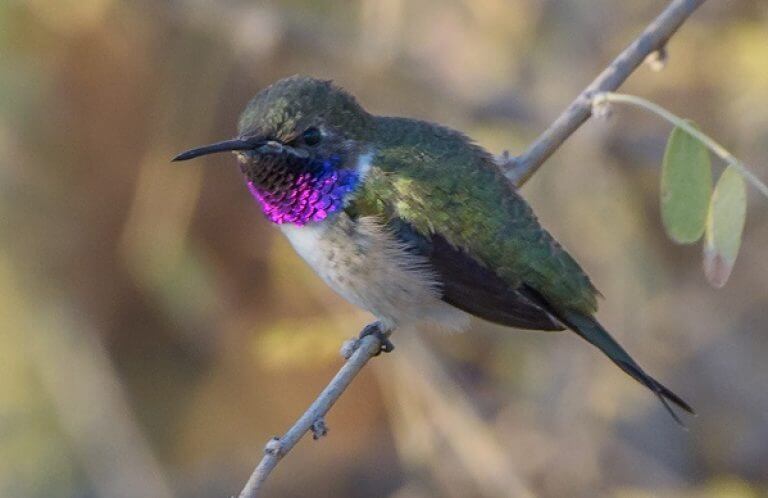About the Sword-billed Hummingbird
Both the genus and species names for the Sword-billed Hummingbird derive from the Latin words for “sword bearer” – a fitting description for the only bird in the world with a bill longer than its body. One of the larger hummingbird species – almost the size of a Swallow-tailed Hummingbird – the Sword-bill's astonishing beak adds an additional four inches to its length. Its bill alone is longer than many other hummingbird species, such as the Chilean Woodstar and Short-crested Coquette.
But this distinctive beak also confers some disadvantages. Since the Sword-billed Hummingbird's bill is too long to be used for preening, this species must use its feet to scratch and preen itself. When perched, a Sword-billed Hummingbird must angle its long bill upwards to maintain its balance.
The Right Beak for the Job
The Sword-billed Hummingbird's seemingly unwieldy beak has a big upside: it can access rich nectar sources that other birds and insects can't easily reach. While it can feed at “normal-sized” flowers and hummingbird feeders, the Sword-billed Hummingbird is most often spotted hovering at flowering plants with long, tubular corollas (petals), such as Aetanthus species, passionflower, trumpet flower, and moonflower (Datura). The bird's long bill provides it access to the nectar well at the base of the flower with little competition, and these plants get a dedicated pollinator – a win-win that puts this bird's seemingly extreme adaptation into more context.
This co-evolution between bird and flower type is so pronounced that the Sword-billed Hummingbird's distribution matches that of many of these long-petaled flowers.
Songs and Sounds
The Sword-billed Hummingbird makes sharp chip calls and a slightly trilled trrr.
Listen here:
Breeding and Feeding
Similar to other hummingbird species, the male Sword-billed Hummingbird defends a feeding territory, chasing away other males, other bird species, and even large insects which may also try to compete for its nectar sources.
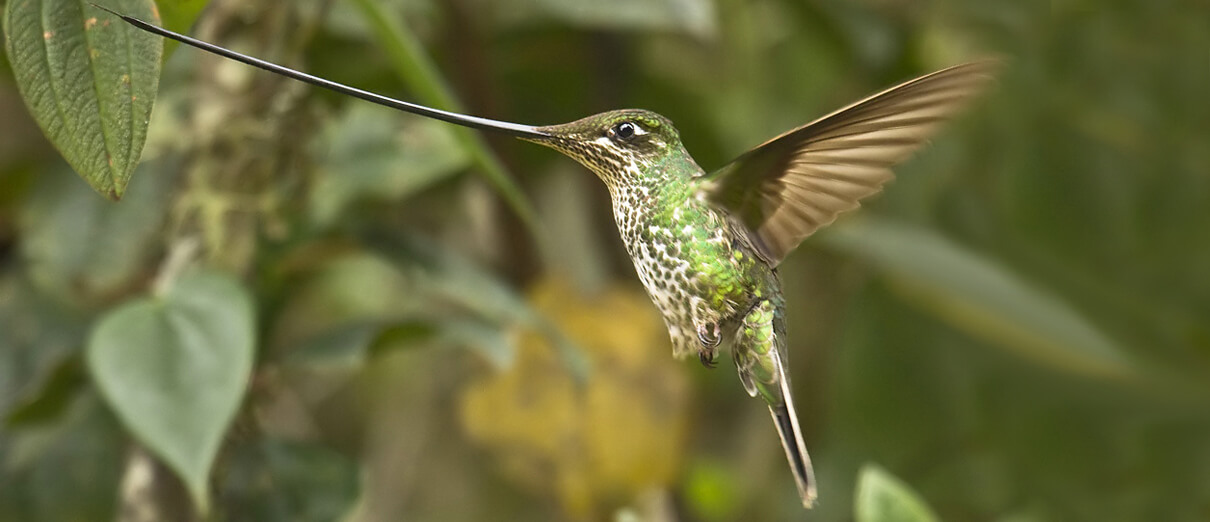
During the breeding season (February – March), the male performs a U-shaped aerial display to attract females to his territory. After mating, the male takes no further part in nesting duties, and the female alone selects the nest site, builds the nest, and raises the young.
Like the Collared Inca, Rufous Hummingbird, and many other hummingbird species, the Sword-billed Hummingbird employs a trap-line feeding strategy, where it forages by flying a routine route between productive feeding areas, pollinating flowers as it goes. It hovers while sipping nectar, or sometimes perches below the flowers while feeding. It also hawks for insects mid-air with a wide-open bill.
Region and Range
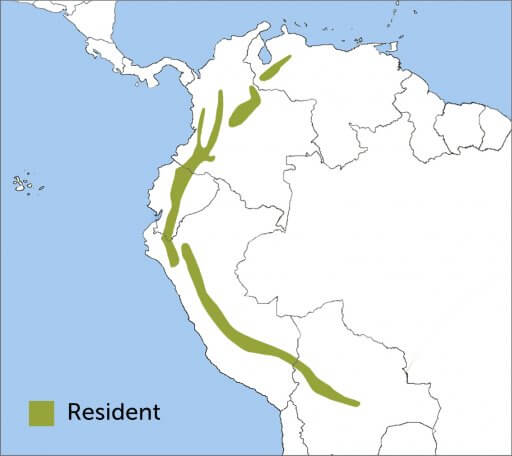
The Sword-billed Hummingbird is widely distributed along the east slope of the Andes, from western Venezuela through Colombia, Ecuador and Peru to Bolivia. It is fairly common throughout this range, even visiting suburban gardens with its favored flowers.
Conservation

Help support ABC's conservation mission!
Climate change and deforestation are the two most probable threats to the Sword-billed Hummingbird as they may lead to habitat loss and a decrease in the flowering plants that provide their favored food sources.
The Sword-billed Hummingbird can be spotted at many ABC-supported reserves, including Abra Patricia and Huembo in Peru, Yanacocha in Ecuador, and Colibrí del Sol in Colombia. For more information on visiting these places and other ABC reserves, visit Conservation Birding.
Get Involved
Many of the rarest bird species in the Western Hemisphere remain relatively unknown. You can learn more about these birds and the threats they face by signing up for ABC's Bird of the Week email series, which frequently highlights these fascinating birds.
American Bird Conservancy and our partners throughout Latin America and the Caribbean have created and expanded more than 100 bird reserves, which protect upward of 1.1 million acres of vital habitat. Together, we've planted more than 6.8 million trees, helping to restore degraded and damaged habitat. You can help us continue to protect endangered birds by making a gift today.





































